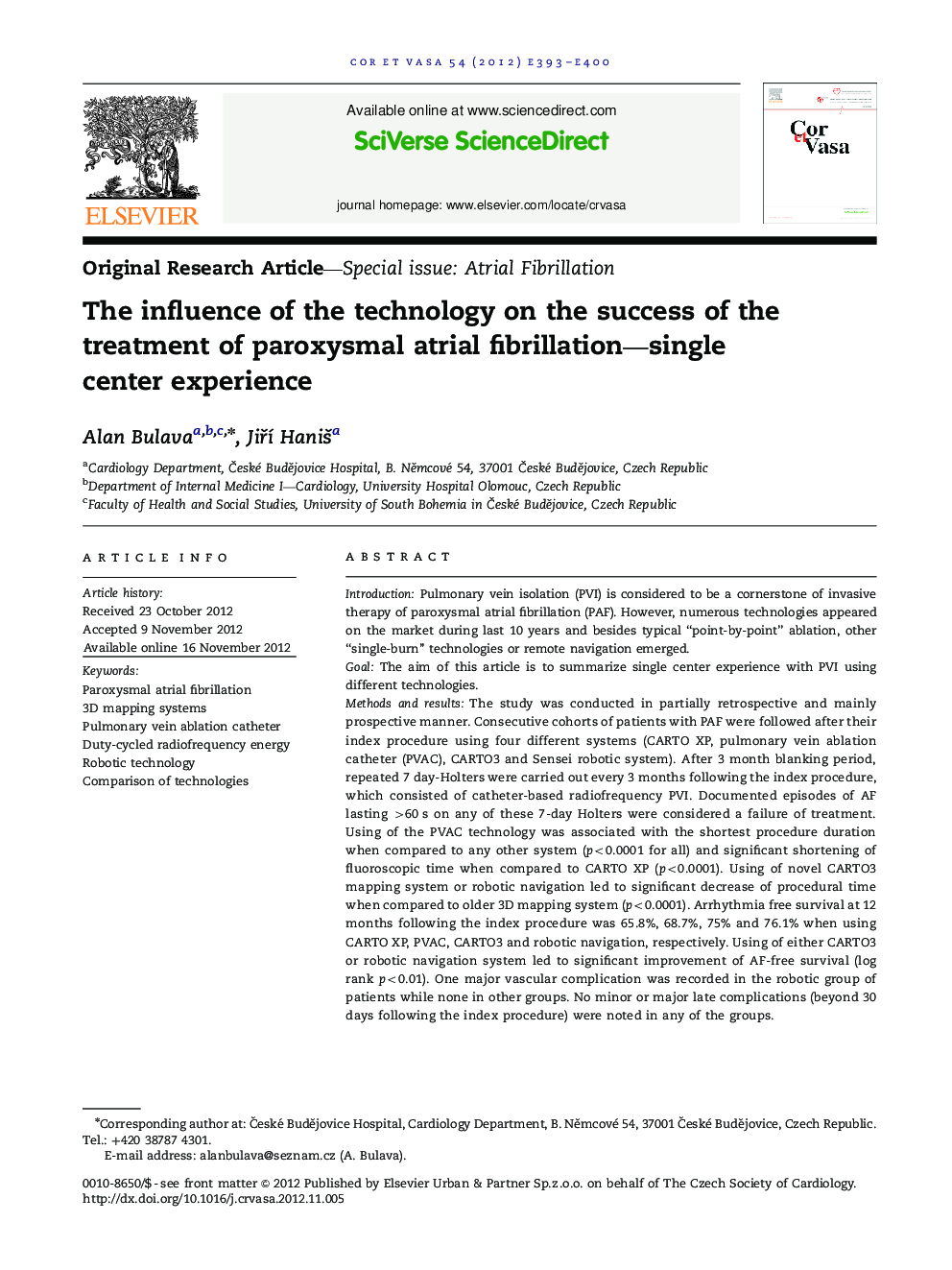| Article ID | Journal | Published Year | Pages | File Type |
|---|---|---|---|---|
| 5879923 | Cor et Vasa | 2012 | 8 Pages |
IntroductionPulmonary vein isolation (PVI) is considered to be a cornerstone of invasive therapy of paroxysmal atrial fibrillation (PAF). However, numerous technologies appeared on the market during last 10 years and besides typical “point-by-point” ablation, other “single-burn” technologies or remote navigation emerged.GoalThe aim of this article is to summarize single center experience with PVI using different technologies.Methods and resultsThe study was conducted in partially retrospective and mainly prospective manner. Consecutive cohorts of patients with PAF were followed after their index procedure using four different systems (CARTO XP, pulmonary vein ablation catheter (PVAC), CARTO3 and Sensei robotic system). After 3 month blanking period, repeated 7 day-Holters were carried out every 3 months following the index procedure, which consisted of catheter-based radiofrequency PVI. Documented episodes of AF lasting >60Â s on any of these 7-day Holters were considered a failure of treatment. Using of the PVAC technology was associated with the shortest procedure duration when compared to any other system (p<0.0001 for all) and significant shortening of fluoroscopic time when compared to CARTO XP (p<0.0001). Using of novel CARTO3 mapping system or robotic navigation led to significant decrease of procedural time when compared to older 3D mapping system (p<0.0001). Arrhythmia free survival at 12 months following the index procedure was 65.8%, 68.7%, 75% and 76.1% when using CARTO XP, PVAC, CARTO3 and robotic navigation, respectively. Using of either CARTO3 or robotic navigation system led to significant improvement of AF-free survival (log rank p<0.01). One major vascular complication was recorded in the robotic group of patients while none in other groups. No minor or major late complications (beyond 30 days following the index procedure) were noted in any of the groups.ConclusionsNovel technologies bring significantly better results in terms of arrhythmia recurrence and allow for shorter procedure duration and lower radiation burden both for patients and the operating physicians.
